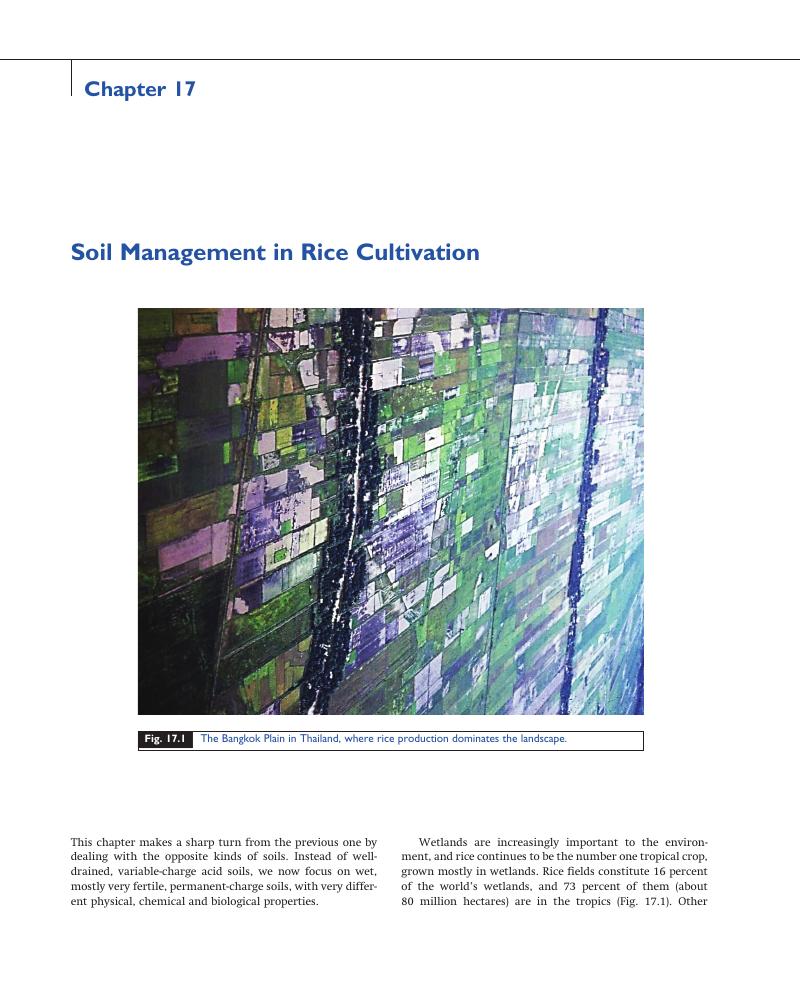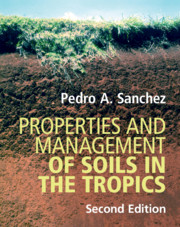Book contents
- Properties and Management of Soils in the Tropics
- Reviews
- Properties and Management of Soils in the Tropics
- Copyright page
- Dedication
- Table of Contents
- Foreword
- Preface
- Acknowledgments
- Part I The Tropical Environment
- Part II Pedology, Physics, Chemistry and Biology
- Part III Soil Fertility
- Part IV Management Systems
- Chapter 16 Soils and Slash-and-Burn Agriculture
- Chapter 17 Soil Management in Rice Cultivation
- Chapter 18 Soils and Livestock-Based Tropical Systems
- Chapter 19 Soils and Tropical Tree-Based Systems
- Index
- References
Chapter 17 - Soil Management in Rice Cultivation
from Part IV - Management Systems
Published online by Cambridge University Press: 09 January 2019
- Properties and Management of Soils in the Tropics
- Reviews
- Properties and Management of Soils in the Tropics
- Copyright page
- Dedication
- Table of Contents
- Foreword
- Preface
- Acknowledgments
- Part I The Tropical Environment
- Part II Pedology, Physics, Chemistry and Biology
- Part III Soil Fertility
- Part IV Management Systems
- Chapter 16 Soils and Slash-and-Burn Agriculture
- Chapter 17 Soil Management in Rice Cultivation
- Chapter 18 Soils and Livestock-Based Tropical Systems
- Chapter 19 Soils and Tropical Tree-Based Systems
- Index
- References
Summary

- Type
- Chapter
- Information
- Properties and Management of Soils in the Tropics , pp. 492 - 543Publisher: Cambridge University PressPrint publication year: 2019
References
- 2
- Cited by



